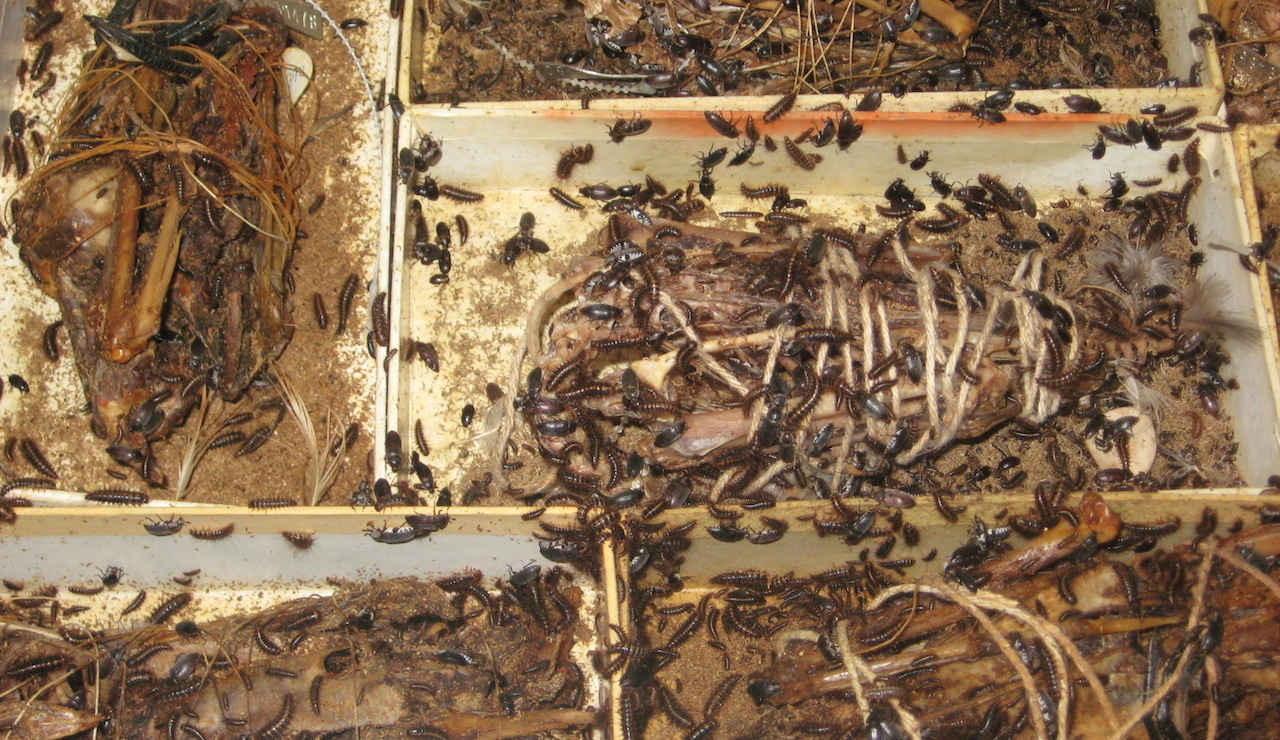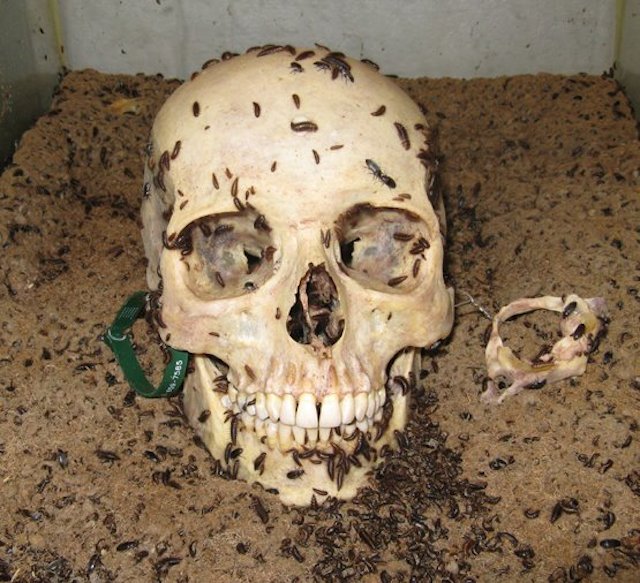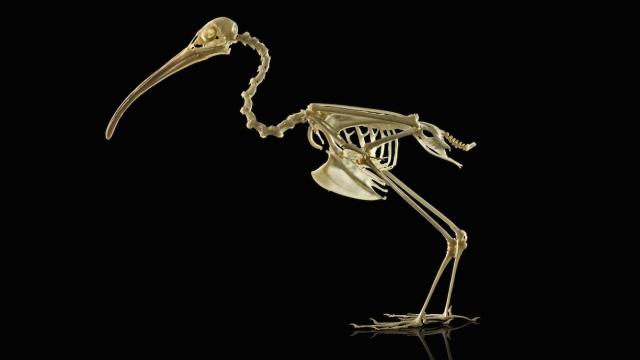An animal skeleton is made up of hundreds of tiny bones, many of which are too fragile to be handled by human hands. That’s why many osteology departments at museums have a special team exclusively devoted to the careful cleaning of these specimens: a colony of millions of flesh-eating beetles.
Picture: Stock Up
Scientists start the work to clean specimens by pulling off feathers and skin, but when it comes to the extremely delicate skeleton itself, even the act of touching the bones might break them. Plus, many bones fit together in ways that are specific to a particular species, so keeping the skeleton completely intact for scientists is extremely important. Even armed with the best flesh-removing tools, a human’s hands are still quite imprecise. Here’s where the bugs come in — more specifically, the dermestid beetle, nicknamed the “scavenger beetle”.

Beetles working at the Smithsonian. Picture: Joseph Caputo
Once humans have removed as much flesh as they can with their fingers, the dried bird carcasses are taken into a room and placed into baskets in a large cage. Here, a colony of beetles — including adults as well as larvae — is unleashed upon the skeletons until they are licked clean. If the beetles’ appetite starts to wane, scientists at the Smithsonian spray the skeletons with a little ammonia. Apparently, due to the scent of both the rotting flesh and the bug excrement, the room smells “sickly sweet”.
This creepy-crawly process ends up saving the museum hundreds of human-hours which would normally be used to clean the bones. It’s also much safer: Instead of using chemicals to remove the flesh, the beetle is basically replicating the organic process found in nature, says David Wilard, collection manager for the Field Museum’s bird division in this excellent video by Casey Clark.
When the bones are finished, the scientists simply brush away the beetles and rinse the skeleton with water. The animal is now ready for display.
This “bug room” technology is used around the world in applications from museums to taxidermy and has been employed since the time of Ancient Greece. To answer what is likely your biggest question: Yes, some institutions do use beetles to clean human remains off skeletons. Sometimes beetles can also help forensic anthropologists in their investigations.

Dermestid beetles being used to clean a human skull at Skulls Unlimited International, Oklahoma City. Picture: Sklmsta
But don’t worry: The beetles don’t like living flesh, so there haven’t been any cases of dermestid colonies attacking museum staff. Yet.
